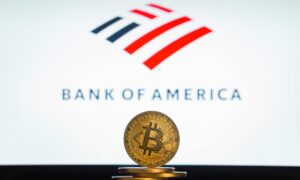TL;DR
- Bitcoin experiences its largest drop in two weeks, with an 8% decrease in its price.
- Bitcoin ETFs witness the biggest outflows since their debut in January.
- Factors such as excessive leverage and the decline of Ethereum also contribute to the market’s fall.
In the past 24 hours, the price of Bitcoin has seen a significant decline, reaching its lowest level in two weeks, due to massive outflows from Bitcoin ETFs in the United States.
According to TradingView data, Bitcoin plummeted by over 8% to $60,827 on March 20, marking its largest percentage decline in a single day since November 2022.
Although it has shown a modest recovery, reaching $62,798, it remains far from its recent record of over $73,000 reached last week.
This sudden decline coincides with several factors, with one of the most notable being the significant outflows from Bitcoin ETFs.
BitMEX Research data shows that on March 19, there was a record net outflow of $326 million from these funds, marking a significant shift in the investment strategy of market participants.
Bitcoin ETF Flow – 19 March 2024
All data in. Record net outflow of $326m pic.twitter.com/iBmBiMR74Z
— BitMEX Research (@BitMEXResearch) March 20, 2024
In addition to ETFs, other factors have contributed to this decline.
Excessive leverage in the Bitcoin market may have exacerbated the correction

As well as the decline in Ethereum prices, the second-largest cryptocurrency by market capitalization.
Ethereum has experienced a 20.92% decline in the past seven days, reaching a price of around $3,207 at the time of writing.
Speculation surrounding meme cryptocurrencies, such as the Solana meme, has also influenced market sentiment.
According to trader and economist Alex Kruger, the euphoria surrounding meme cryptocurrencies may have gone too far, indirectly affecting BTC and other major cryptocurrencies.
The volatility in the cryptocurrency market underscores the importance of caution for investors.
While BTC and other cryptocurrencies have experienced significant growth in recent years, the unpredictable nature of the market suggests the need for prudent risk management by investors.










